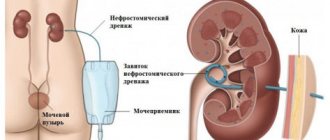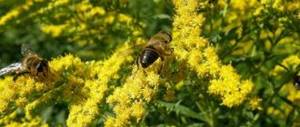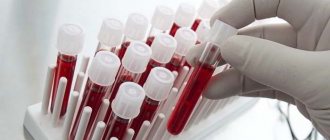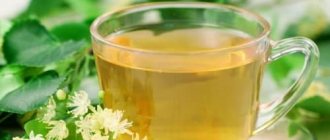Before starting treatment for hydronephrosis, it is necessary to understand that this is a pathological condition leading to gradual expansion of the kidney, atrophic phenomena and the development of renal failure due to acute or gradual disruption of the outflow of urine. Among the many causes of hydronephrosis, most often it occurs due to urolithiasis, namely the presence of a calculus of the ureter or pyelocaliceal system of the kidney, the latter completely or partially blocking their lumen. As a result, such processes lead to the fact that a person needs radical surgery, the plastic surgery of which saves his life.
How to treat hydronephrosis? What treatment options are most effective?
Types of disease
There are acquired and congenital forms of the pathology. In the first case, the disease appears as a result of the development of a tumor, compression or kinking of the ureter, in the presence of stones. The cause of the congenital disease is the abnormal structure of the organ, often associated with diseases of the woman during pregnancy.
At an early stage, the disease does not have pronounced symptoms. But over time, the patient feels pain in the lumbar region. Due to the accumulation of urine, the kidneys can become infected, which causes a rise in temperature. The disease can be recognized by other signs:
- feeling of heaviness in the stomach;
- attacks of nausea;
- increased blood pressure;
- constant dizziness;
- difficulty urinating;
- the presence of blood in the urine.
Particularly difficult is the treatment of hydronephrosis of both kidneys, when it is impossible to use surgical treatment methods. In this case, folk remedies are relevant, which can reduce the severity of symptoms and stop the development of the infectious process. At an early stage of the disease, treatment of kidney hydronephrosis with folk remedies provides complete healing, but to achieve positive dynamics, the herb should be used for several months.
Complications and prognosis
The prognosis for treatment of hydronephrosis is determined by a specialist individually. Operations aimed at eliminating obstructions to the outflow of urine are successful only in half of the cases.
In 10–18% of cases, the narrowing of the ureter forms again.
The prognosis for life with a unilateral process is favorable, since one healthy kidney can completely cleanse the body of waste and toxins. With bilateral hydronephrosis, the prognosis is serious. The following complications often develop:
- renal failure,
- formation of stones in a kidney affected by hydronephrosis,
- bleeding after surgery,
- repeated narrowing of the ureter after the intervention.
Pumpkin treatment
The ideal option is pumpkin stalks, which have strong analgesic properties. They are crushed and filled with half a liter of water. The mixture is heated in a water bath for about twenty minutes, after which it is removed from the heat, wrapped in a thick cloth and left for about two hours. It is advisable to consume the prepared infusion warm - half a glass four times a day. You can simply drink the product in small portions throughout the day. Vegetable juice also gives a good effect. It should be taken three to four times a day.
Advice for the patient
If you use folk remedies correctly, then after a few weeks your general well-being improves and pain is eliminated. It is important to know that folk recipes are effective only at the initial stage of pathology development. If the disease is too advanced, the patient should be under constant medical supervision. Under such conditions, therapy should be comprehensive. It is forbidden to self-medicate and prepare infusions without the appointment of a specialist.
Herbal treatment
Herbs for hydronephrosis are used in the form of preparations. It is recommended to use them for no longer than three to four months, changing and keeping them for about two weeks after each course. Infusions are taken on an empty stomach, half an hour before meals. The most widely used means are:
- Dried burdock root, bearberry, chamomile inflorescences, wormwood.
- Adonis grass, oat grains, nettle leaves, dried hop cones, horsetail.
- Birch leaves, dried dandelion root, juniper fruits.
- Leaves of currant, raspberry, knotweed, calamus root, meadowsweet and chamomile inflorescences.
- Fireweed herb, alder cones, celandine, coriander, mint leaves, marshmallow root, herbal part of the grass.
All components should be crushed before mixing, and the roots should be passed through a meat grinder. To prepare the infusion, you will need two spoons of the selected mixture, which are poured with boiling water and left to infuse overnight. In the morning, filter the infusion and take a third of a glass. If the taste seems unpleasant or bitter, you can sweeten it with natural honey.
Traditional methods require regular and long-term use.
After two to three weeks, the patient’s condition improves, but taking the infusions cannot be stopped. Complete recovery from the disease is possible after eight to twelve months. Together with herbal teas, herbal teas prepared from one plant are used. Tea made from the petals of blue cornflower or common heather gives a good effect. Another popular remedy is parsley root. It is crushed and poured with boiling water, left overnight. In the morning, drain the liquid and drink a spoonful on an empty stomach.
Treatment of kidney hydronephrosis with folk remedies is possible only if the components of the preparation do not cause allergies. In addition, they should be used under the strict supervision of a doctor, who will help you choose the best option.
Differential diagnosis
Hydronephrosis has no characteristic symptoms, and to clarify the diagnosis the patient is prescribed:
- Ultrasound. The procedure allows you to assess the condition of the cups and pelvis, measure the thickness of the parenchyma and identify the degree of deformation.
- Radiography. X-rays are used to determine the size of the organ, and contrast urography is used as an additional research method. In this case, the patient is injected intravenously with a radiopaque substance and a series of photographs are taken at certain intervals. In a kidney affected by hydronephrosis, blood and urine with a contrast agent will move more slowly.
- Radioisotope urography. A more accurate technique compared to conventional urography, which allows us to identify the degree of damage to the kidney tissue and the nature of the obstruction in the outflow of urine. Unfortunately, this method is expensive and is not used in most public clinics.
- MRI and CT. The most informative methods for identifying the nature of tissue damage and for analyzing the performance of an organ. Prescribed to confirm the diagnosis.
In addition to instrumental examination, patients undergo various urine samples:
- general;
- according to Nichiporenko;
- Reberg;
- Zimnitsky.
Blood testing is also considered important. OAC helps to identify signs of the inflammatory process. In biochemistry, indicators such as creatinine, protein and uric acid are important.
The purpose of a diagnostic examination is not only to confirm the development of hydronephrosis, but also to identify possible causes of the pathology. Treatment begins after confirmation of the diagnosis and clarification of the factors that caused it.
Disease prevention
The risk of hydronephrosis can be reduced by following simple rules:
- avoid hypothermia;
- limit salt intake;
- Empty your bladder regularly.
For preventive purposes, it is recommended to use herbal remedies. Thanks to their anti-inflammatory and diuretic properties, they provide a complex effect.
For a month, you can drink a decoction made from calendula, bearberry, mint leaves and dill seeds. The mixture must be poured with warm water and kept in a water bath for thirty minutes, then cooled, strained and brought to the original volume with boiled water. Drink three spoons half an hour before meals.
Herbal tea made from a mixture of burdock, bearberry, chamomile and wormwood roots, as well as rose hips and celery, is beneficial. The mixture is poured into a thermos and poured boiling water, left for at least an hour, filtered and slightly cooled. Drink half a glass of tea three times a day.
Traditional methods in the treatment of renal hydronephrosis give a good effect. They help reduce pain, ease the course of the disease and speed up recovery. But any remedy must be agreed with a doctor, as it may have contraindications.
Proper nutrition for kidney hydronephrosis
For kidney problems, the basis of the diet is vegetables and fruits; it is recommended to consume them at least 500 g per day. The amount of protein should be limited to 0.5 g per 1 kg of weight, and preference is best given to lean meats and dairy products. When taking diuretics, a diet that includes foods high in calcium (for example, baked potatoes and dried fruits) is usually prescribed. You should also limit your salt intake.
Excluded from the diet:
- fatty meat and fish;
- broths based on mushrooms, meat, fish;
- fried and smoked dishes;
- canned and pickled foods;
- chocolate;
- alcohol, carbonated drinks;
- legumes;
- seasonings
Photo gallery: Prohibited foods for hydronephrosis
Recommended to use:
- raw and boiled vegetables;
- fruits and berries;
- boiled lean meat, fish;
- dairy and fermented milk products;
- cereals, especially buckwheat and rice;
- eggs.
Photo gallery: Products that are recommended to be included in the diet menu when you are sick
Sample menu for the day:
| Breakfast | milk buckwheat porridge with butter, apple and carrot salad, tea |
| Afternoon snack | apple or fruit juice |
| Dinner | vegetarian soup, boiled meat, baked potatoes, compote |
| Dinner | cottage cheese casserole, stewed cabbage, kefir |
Folk remedies
- pumpkin stalks;
- bean shells;
- burdock root;
- chamomile;
- sagebrush;
- rose hips and celery;
- bearberry;
- adonis herb;
- oat grains;
- nettle leaves;
- dried hop cones;
- birch leaves;
- dried dandelion root;
- meadowsweet inflorescences;
- juniper fruits.
- currant and raspberry leaves;
- knotweed;
- calamus root;
- fireweed grass;
- alder cones;
- celandine;
- horsetail;
- coriander;
- mint leaves;
- marshmallow root;
- herbal part of the grass
- tea from ordinary heather or blue cornflower petals;
- parsley root.
- calendula;
- Dill seeds.
Contraindications
When using folk remedies, you should remember about possible individual intolerance to some ingredients, as well as other contraindications:
| Medicine | Contraindications |
| Currant leaves | pregnancy, thrombophlebitis |
| Raspberry leaves | stomach ulcer, gastritis |
| Pharmaceutical chamomile | diarrhea |
| Meadowsweet | constipation, low blood pressure, poor blood clotting |
| knotweed | pregnancy, thrombophlebitis |
| Seed, cornflower, birch leaves, alder cones, calendula | pregnancy |
| Pumpkin | stomach ulcer, gastritis |
| Parsley | pregnancy, gout, urolithiasis |
| Common heather | constipation, stomach ulcer with low acidity |
| Oats | cardiovascular failure |
| Horsetail | pregnancy, low blood pressure |
| Adonis | pregnancy, stomach ulcer, gastritis, hypertrophic cardiomyopathy |
| Hop | pregnancy, gastritis with high acidity |
| sedum | pregnancy, childhood, hypertension |
| Bedstraw | diabetes |
| Celandine | pregnancy, epilepsy, constipation, angina pectoris |
| Fireweed | hypotension, gallstones |
| Mint | |
| Coriander | hyperacid gastritis, gastric ulcer, coronary heart disease |
| Volodushka | stomach ulcer, gastritis with low acidity |
| Althea | pregnancy, constipation, varicose veins |
| Dandelion | pregnancy, varicose veins |
| Juniper | pregnancy, hypertension |
| Sagebrush | pregnancy, stomach ulcer, thrombophlebitis |
| Bearberry | pregnancy, digestive tract disorders |
| Kopytnya | pregnancy, childhood |
Preparing herbal teas
All fees, the composition of which will be presented below, are prepared in approximately the same way. Plants dried in the shade are first crushed, mixed in the indicated proportions, then measured with the indicated measure. Pour two tablespoons of herbal mixtures into a glass of boiling water and leave for 24 hours in a warm place or thermos. After straining the infusion, adults take a quarter glass (50 ml) of the drug; for children, the drug is diluted in the above proportions with water. The frequency of administration usually corresponds to the amount of food consumed (3-4 times during the day). Here are the compositions of the most effective remedies for the treatment of hydronephrosis and recovery after surgery.
- Birch leaves, dandelion root, and juniper fruits are mixed in equal parts. The collection has a pronounced anti-inflammatory and moderate diuretic effect, reduces blood pressure in hypertension of renal origin.
- Currant leaves (red currant), knotweed grass, raspberry leaves, meadowsweet flowers, calamus root, chamomile flowers, a succession are mixed in equal proportions. The infusion has an analgesic and antispasmodic effect (helps with renal colic), promotes the excretion of nitrogenous bases by a healthy kidney.
- Burdock root, wormwood, chamomile (flowers), bearberry and celery root plus rose hips are mixed in a 1:2 ratio. The collection cleanses the blood of toxins, relieves inflammation and has an antibacterial effect in the genitourinary system (works as a uroseptic).
- Horsetail, hop cones, adonis, birch leaves in equal parts. The collection effectively relaxes the spasmodic walls of the ureters and facilitates the passage of urine through the outlet channels. Additionally, it has an anti-inflammatory effect and relieves low-intensity pain.
- The following are taken in equal volume fractions: knotweed grass (young plant), alder cones, celandine grass, aerial part of the grass, peppermint leaves (can be replaced with lemon balm). The infusion has an antispasmodic effect, relaxing the smooth muscles of the ureters and thereby improving the outflow of urine from the pathologically altered kidney. In addition, the drug promotes the elimination of toxins, slightly increases diuresis, while reducing blood pressure.











